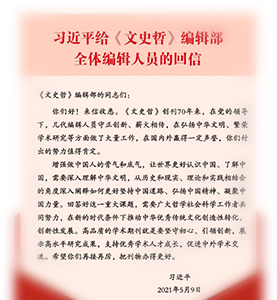自宗白华先生明确提出“错彩镂金”和“芙蓉出水”代表了中国美学史上两种不同的美感或美的理想以来,一般论者都会认为“错彩镂金”与“芙蓉出水”分别对应着儒道两家思想。然而,通过分析这对审美范畴产生和发展的历史背景,我们发现“错彩镂金”与“芙蓉出水”的内涵其实是根植于先秦儒家关于 “文质关系”的论述;而对于这对审美范畴的评判,则与它们对儒家“天人关系”观念的呈现密切相关。作为两种对应存在的审美取向,“错彩镂金”与“芙蓉出水”也体现在不同时代的礼乐文化及各种艺术形式之中。相对于其他各家思想,儒家思想以及作为其实践形态的礼乐文化对这对审美范畴的形成与发展,起到了明显的推动作用。
A Discussion of the Origin Relation of “Being Colourfully and Dazzlingly Embellished” and “Lotus Coming into Bloom” with Confucian Culture
Gao Yinggang
Since Zong Baihua proposed that “being colourfully and dazzlingly embellished” and “lotus coming into bloom” represent two kinds of senses or ideals of beauty in the history of Chinese aesthetics, many scholars consider that those two correspond to Confucian and Taoist thought respectively. However, through analyzing the historical background in which this couple of aesthetic categories generated and developed, the author considers that the connotation of the two were deeply rooted in the discussions of pre-Qin Confucianists on the relation between “accomplishments” and “solid qualities,” and judgement of the two categories is closely related to their presentation of the Confucian idea on the relation between heaven and human. As two kinds of aesthetic approaches corresponding to each other, they were also reflected in ritual culture and art forms in different times. Compared to other schools of thought, Confucianism and ritual culture as its practical form had been contributed more obviously to the formation and development of this couple of aesthetic categories.


